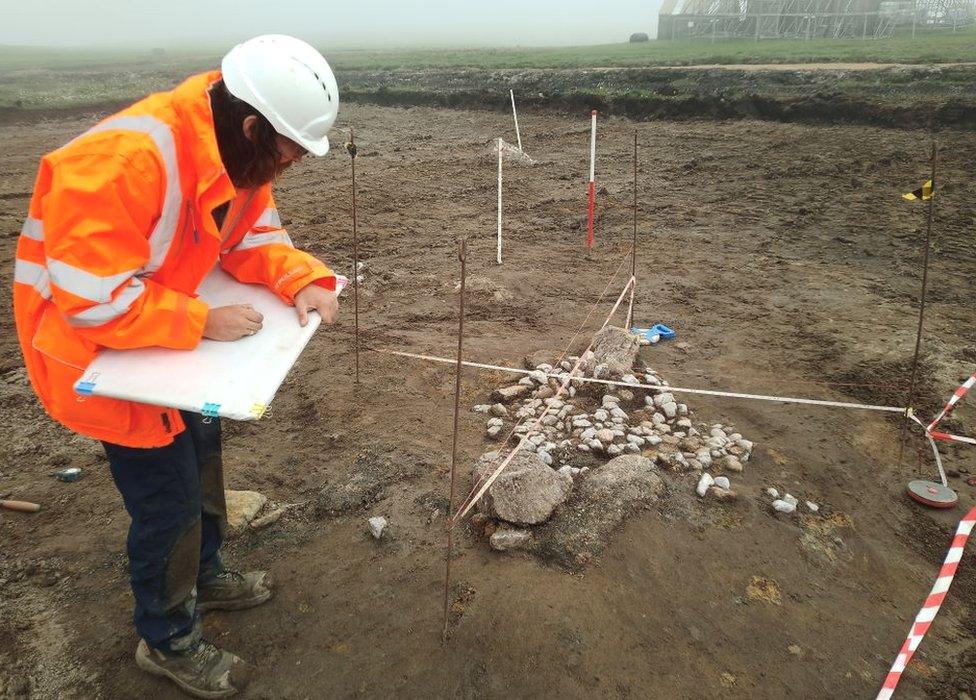Bronze Age discovery made at Shetland spaceport site
- Published

The discovery was made in Unst
Remains of what is believed could have been a Bronze Age ritual cremation cemetery have been found at Shetland's planned SaxaVord spaceport.
The discovery was made during groundworks for the rocket launch site on the Lamba Ness peninsula in Unst.
Features including pits and burnt bone have been uncovered. Archaeologists think it may date from 2200-1800 BC.
The discovery is not expected to hamper development work at the spaceport, which is supporting the excavation.
Katie O'Connell, of site assessors AOC Archaeology, said: "The several deposits of burnt bone which have been found are likely associated with the remains of cremation deposits.
"The number and density of cremations suggest that the location of their discovery was likely a cremation cemetery that may have been in continuous use over time in prehistory.
"A standout feature uncovered so far is the remains of a quartz setting. White quartz is often suggested to have had significance in prehistory and is found in association with burial tombs, rock art panels, and deposited carefully at domestic sites."
She added: "Though excavation is only beginning, there may be a relation between the large stones, alignments of pits, the quartz setting, and the cremation cemetery, suggesting that together these form part of a ritual complex."
'Bronze Age to Space Age'
Dr Val Turner, Shetland's regional archaeologist, said she had "always suspected" that some of Shetland's rings of boulders and low stones could in fact be Bronze Age cremation cemeteries, so it was "hugely exciting".
She explained: "The Bronze Age is perhaps the period of Shetland's past which we know least about and this is a wonderful opportunity to change that."
Spaceport planning permission was granted last year. Rockets could carry small satellites into space.
SaxaVord spaceport chief executive Frank Strang said: "This is a tremendously exciting discovery and we will be supporting further study of the remains to find out the full story.
"With Unst's Viking heritage, we had always thought of the timespan from the longship to the spaceship. Now we know there has been activity on our site for more than 4,000 years it's the Bronze Age to the Space Age."
Related topics
- Published28 February 2022